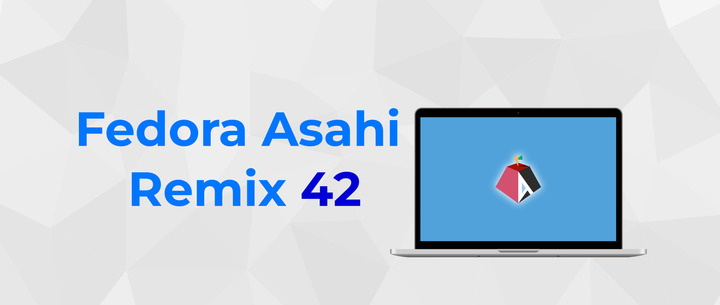Fedora Asahi Remix 42 is now available
We are happy to announce the general availability of Fedora Asahi Remix 42. This release brings the newly released Fedora Linux 42 to Apple Silicon Macs, following our Beta release last month.
Fedora Asahi Remix is developed in close collaboration with the Fedora Asahi SIG and the Asahi Linux project. This release incorporates all the exciting improvements brought by Fedora Linux 42. Notably, the new FEX integration provides an easier way to run x86 and x86-64 binaries out of the box via emulation. It also continues to provide extensive device support, including the recently added microphone support for MacBook laptops.
Fedora Asahi Remix offers KDE Plasma 6.3 as our flagship desktop experience, with all of the new and exciting features brought by Fedora KDE Plasma Desktop 42. It also features a custom Calamares-based initial setup wizard. A GNOME variant is also available, featuring GNOME 48, with both desktop variants matching what Fedora Linux offers. Fedora Asahi Remix also provides a Fedora Server variant for server workloads and other types of headless deployments. Finally, we offer a Minimal image for users that wish to build their own experience from the ground up.
You can install Fedora Asahi Remix today by following our installation guide. Existing systems, running Fedora Asahi Remix 40 or 41, can be updated following the usual Fedora upgrade process. Upgrades via Fedora Workstation’s Software application are unfortunately not supported and DNF’s System Upgrade plugin has to be used.
Please report any Remix-specific issues in our tracker, or reach out in our Discourse forum or our Matrix room for user support.
Fedora Asahi Remix 42 has been released for Apple Silicon Macs, introducing the latest Fedora Linux 42 to this platform. This release, created in partnership with the Fedora Asahi SIG and the Asahi Linux project, features enhancements including FEX integration, microphone support for MacBook laptops, and KDE Plasma 6.3 as the primary desktop experience. Additionally, it provides a GNOME variant and a minimal image, allowing users to customize their experience. Current systems can be enhanced through the standard Fedora upgrade procedure.

